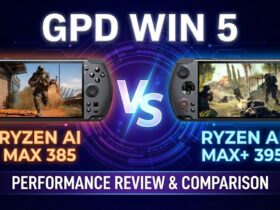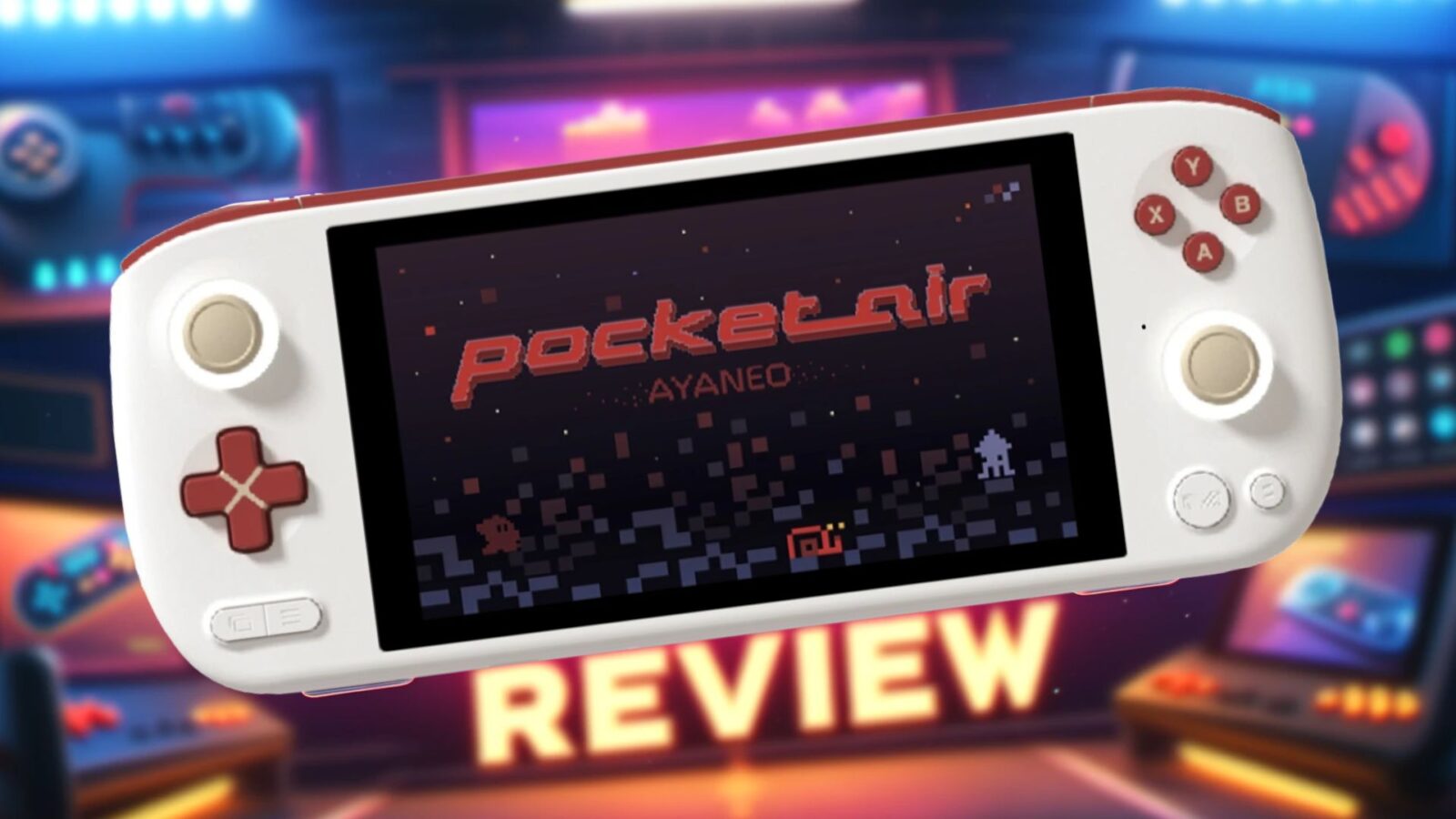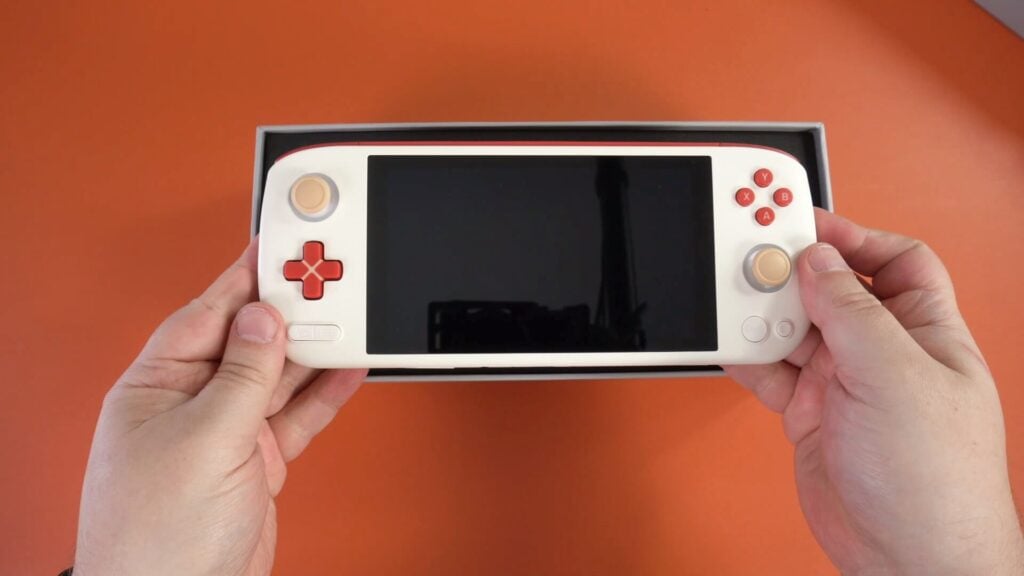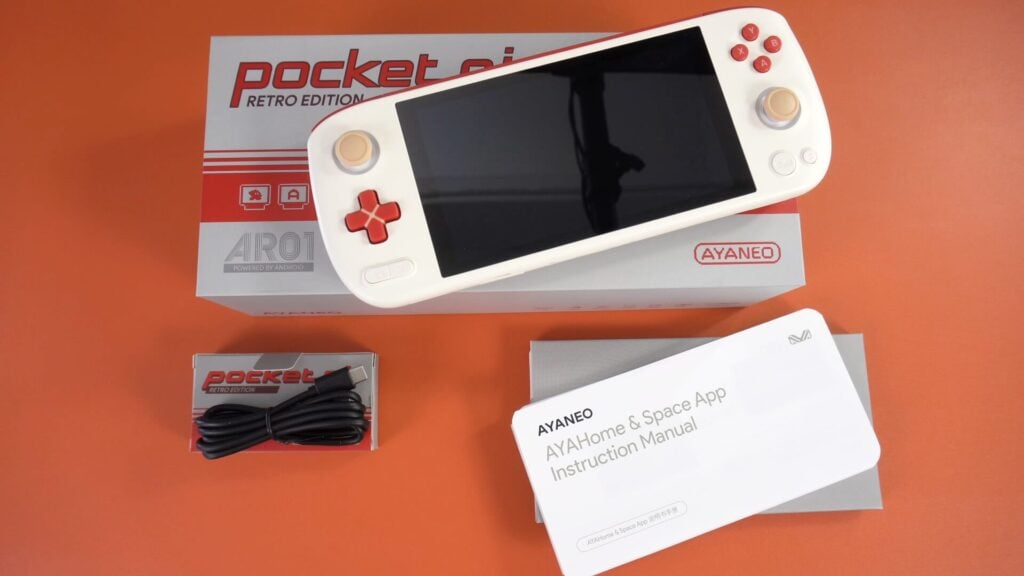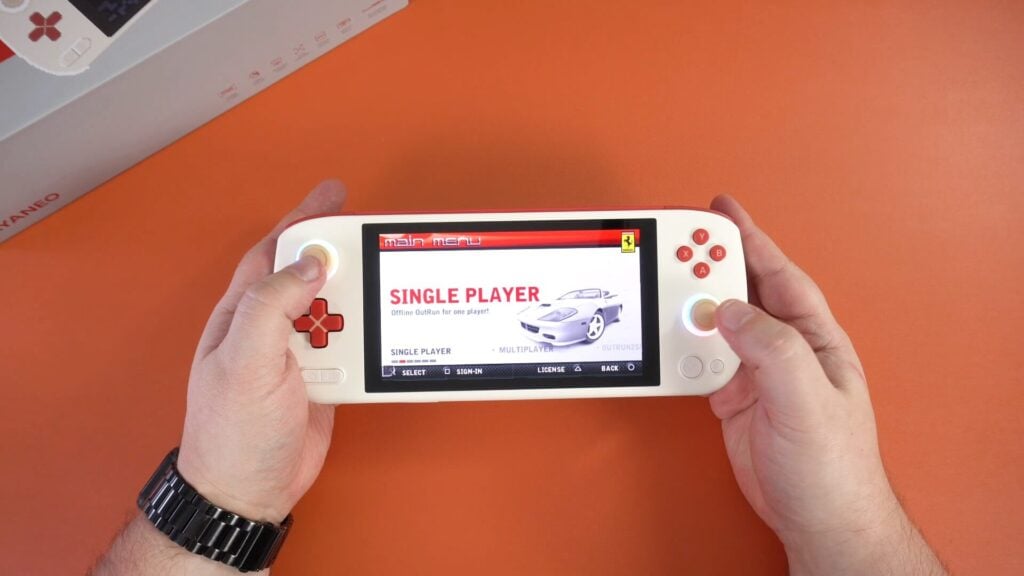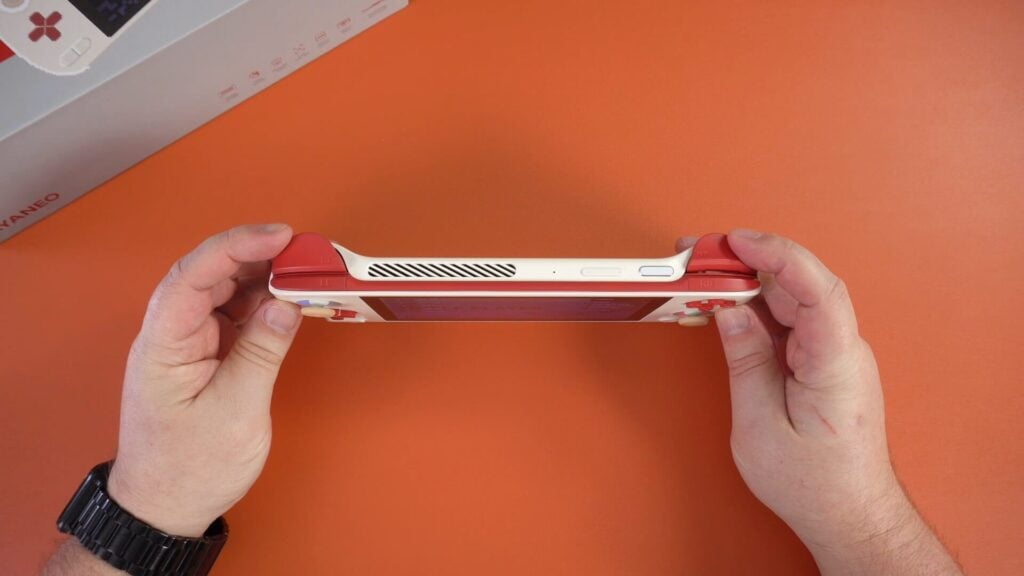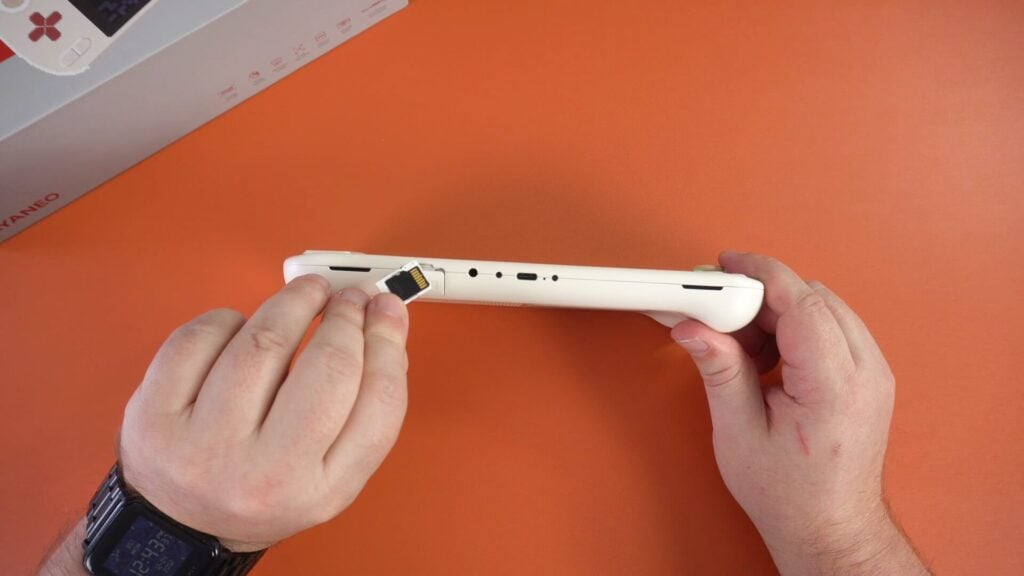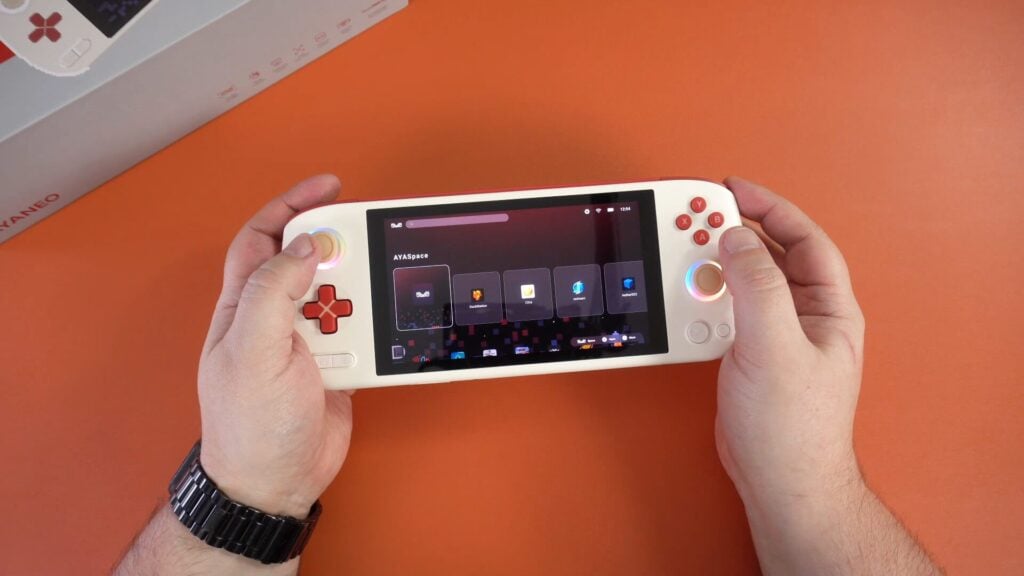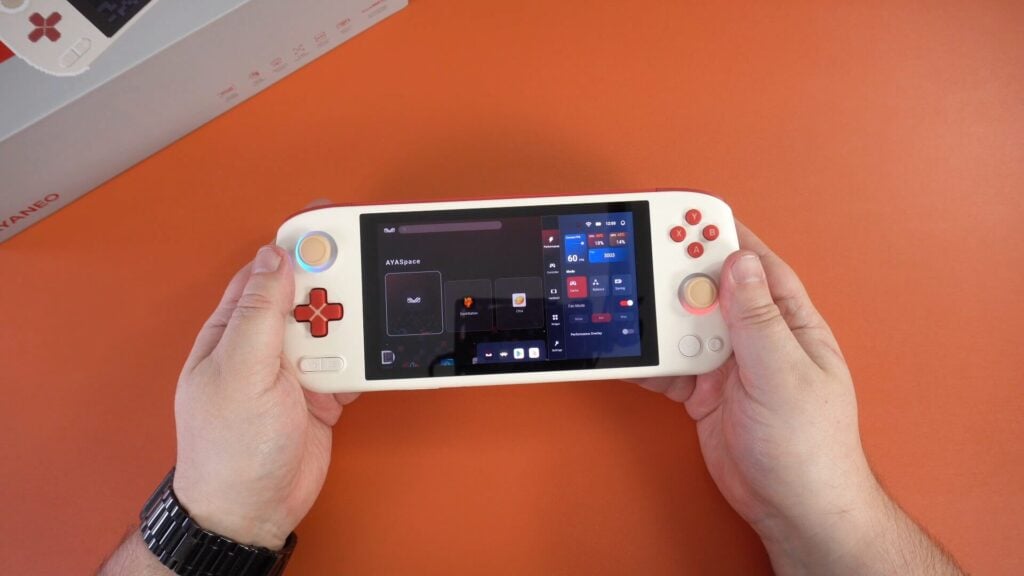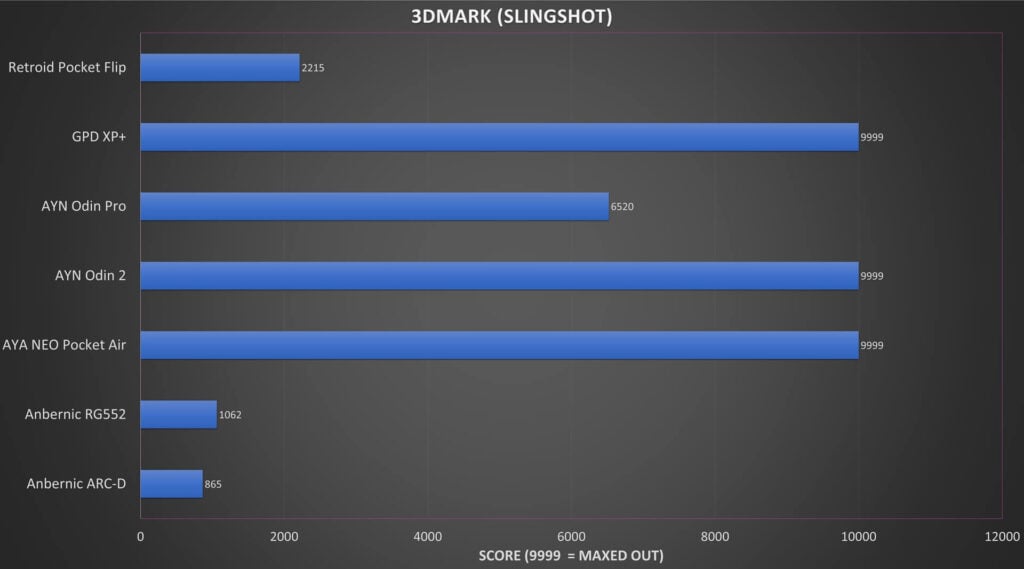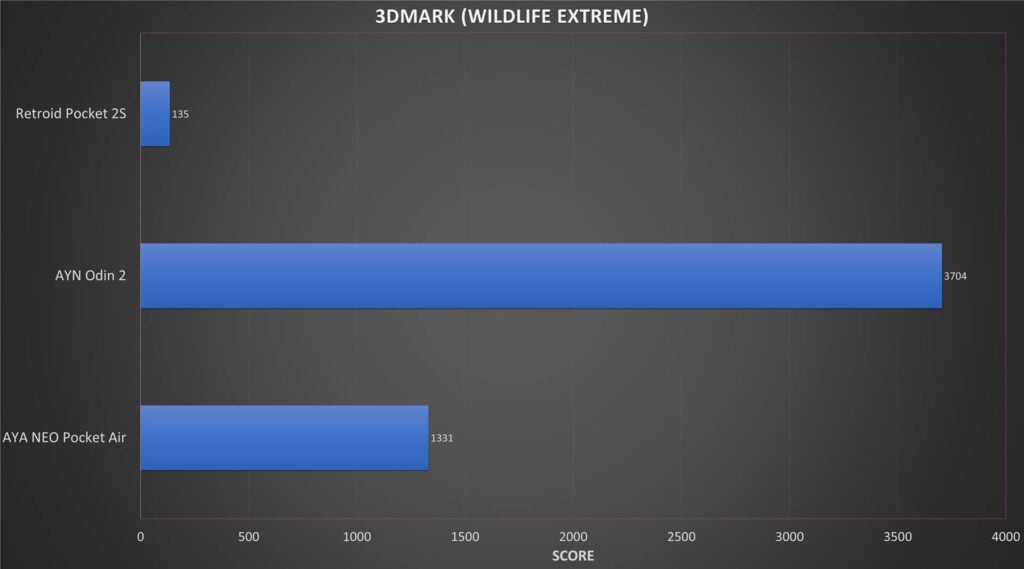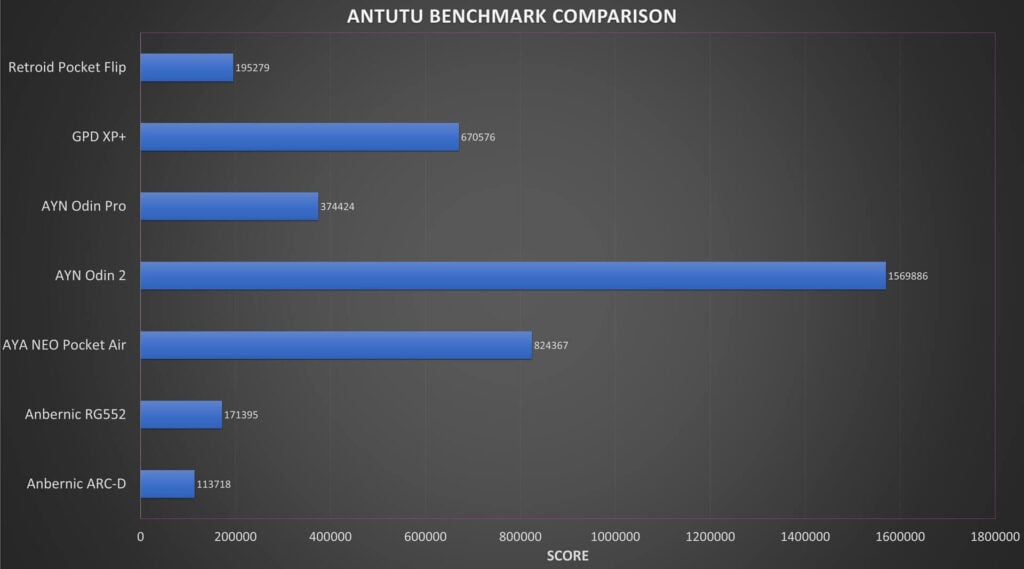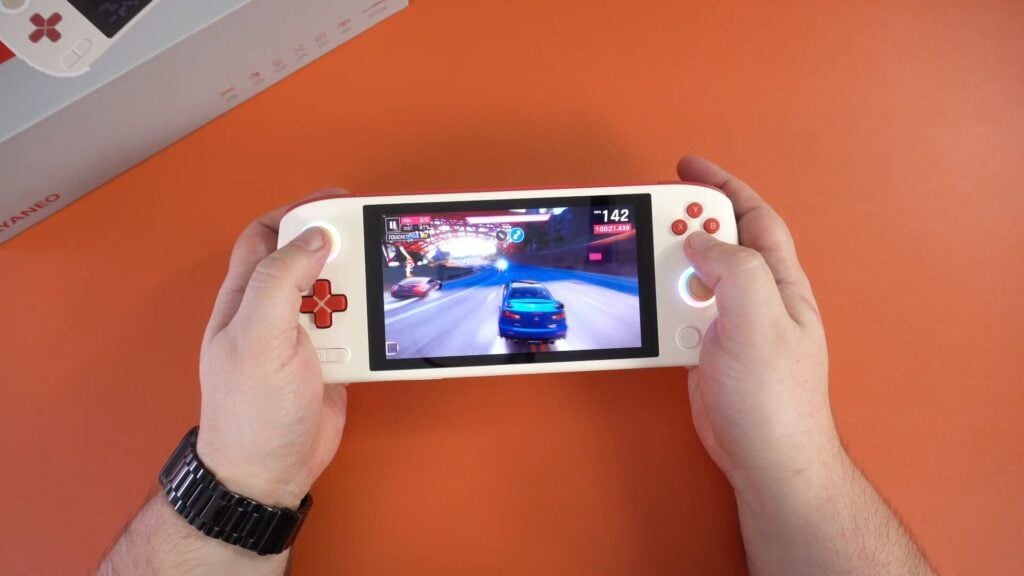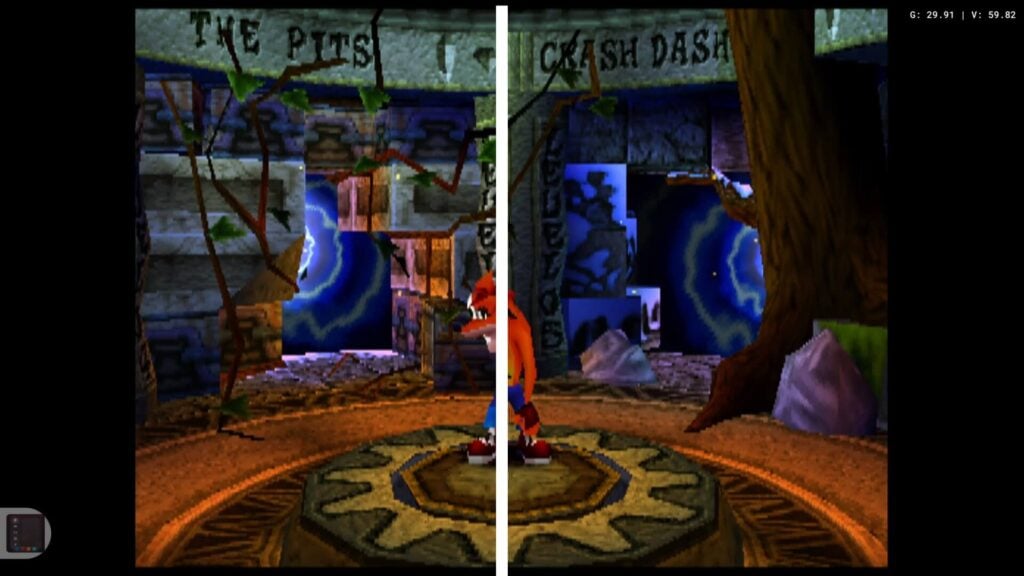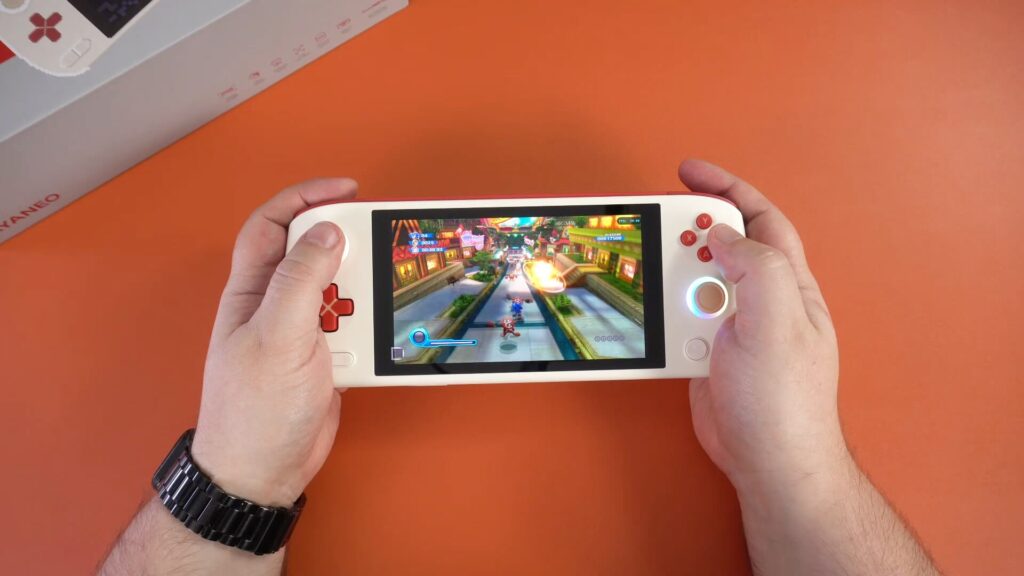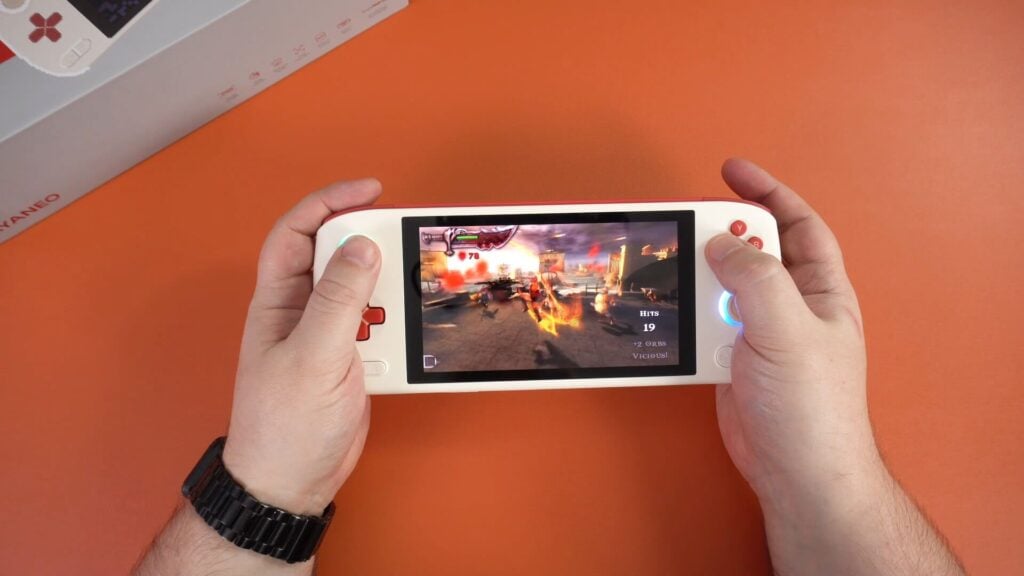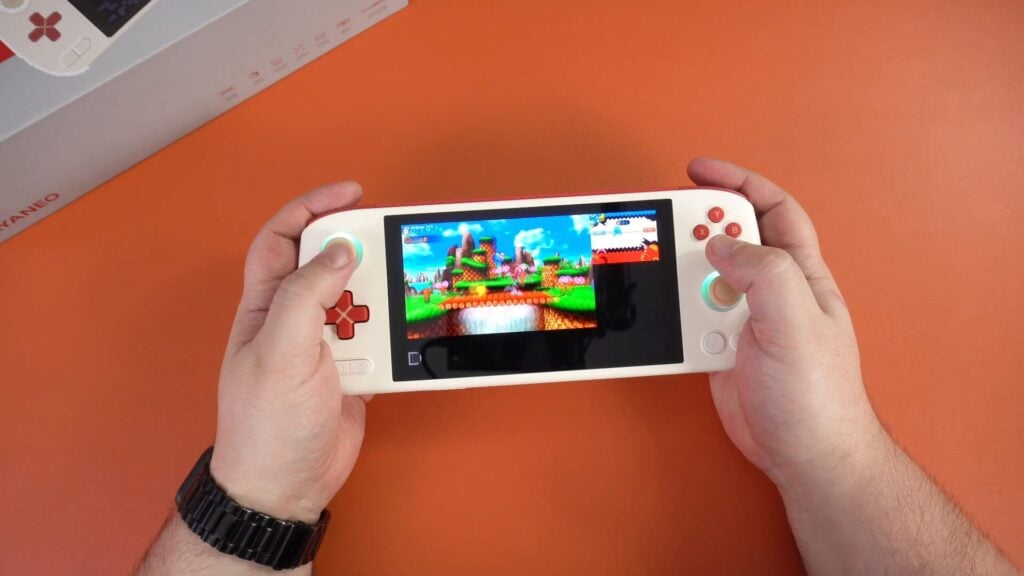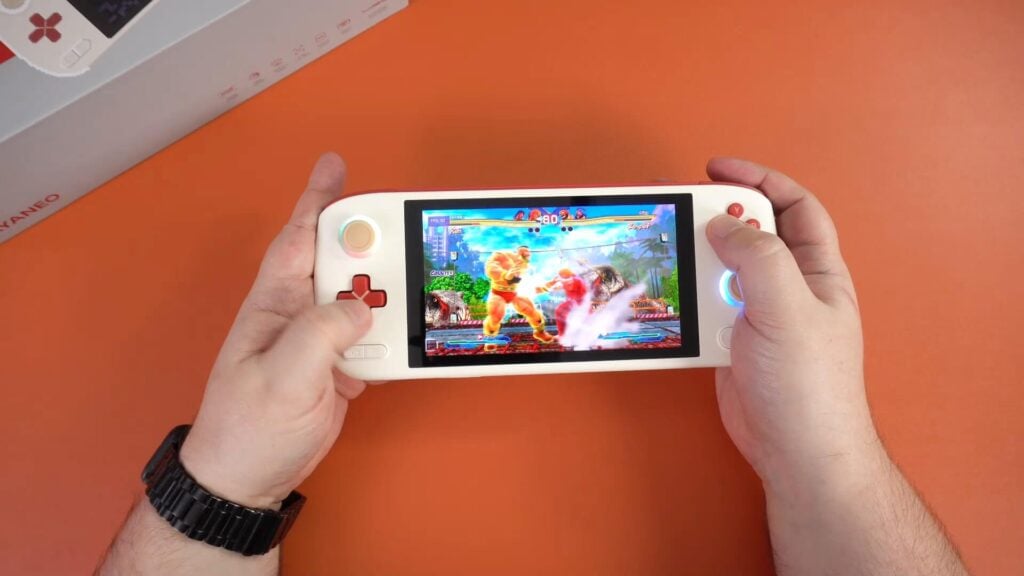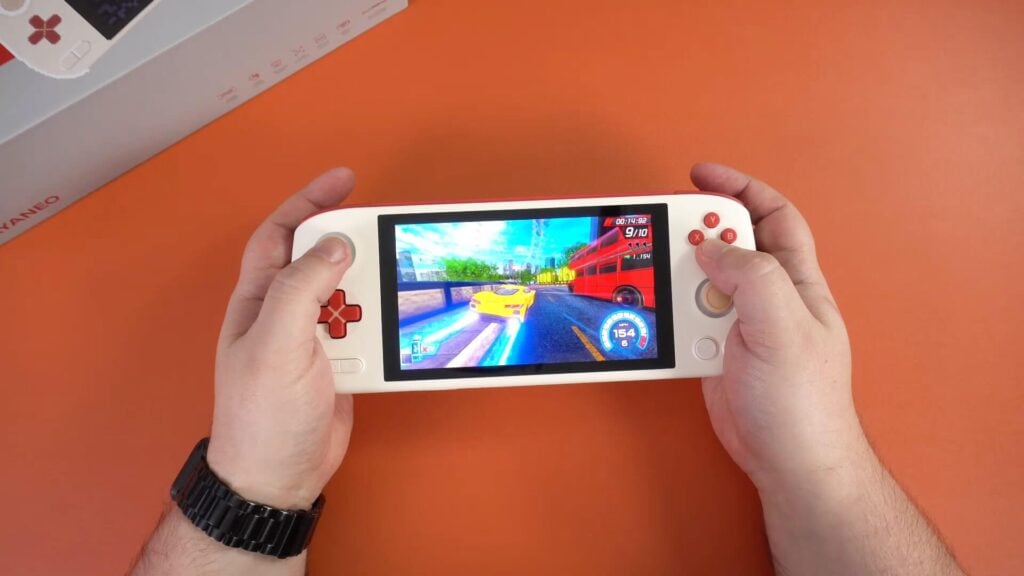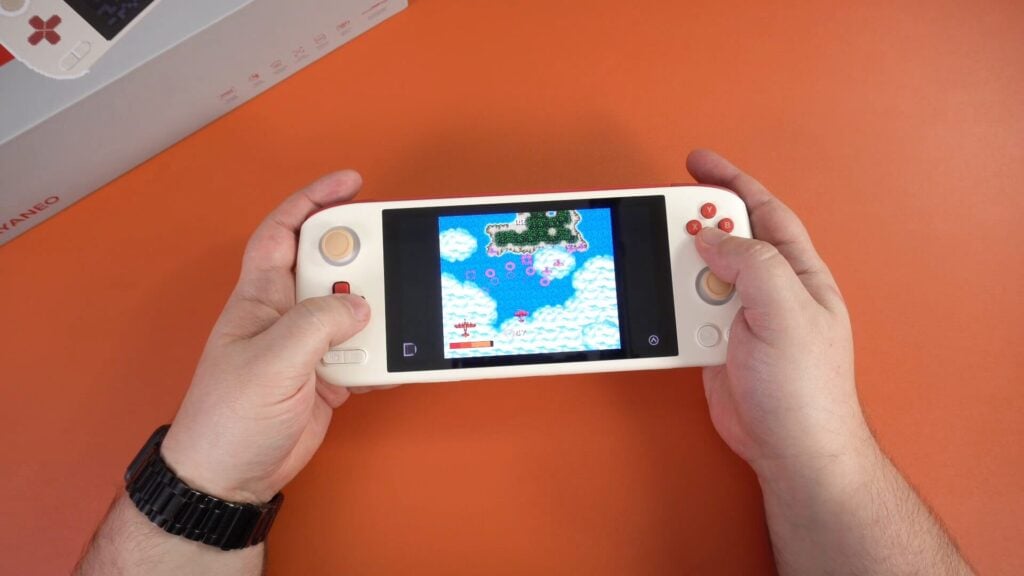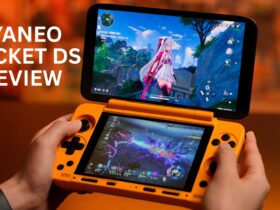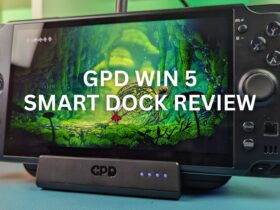AYANEO Pocket AIR review
-
Design
(4.5)
-
Build Quality
(4.5)
-
Display
(5)
-
Performance
(4)
-
Features
(4.5)
-
Software
(4.5)
Summary
Discover the AYANEO Pocket Air: a powerful, portable gaming handheld with cutting-edge specs, vibrant AMOLED display, and sleek design.
Overall
4.5User Review
( votes)Pros
- Retro themed design with classic white and red theme
- Great looking 5.5″ AMOLED touchscreen display
- AYA HOME and SPACE interface gives a more premium UI feel
- Faster performance with LPDDR5 RAM
Cons
- AYA HOME & SPACE software incomplete
- No screen mapping software (TBA)
The AYANEO Pocket AIR is AYA’s first Android handheld in what is already a very competitive market. Will their different approach with a premium design and custom software be enough to warrant a buy? Find out in our full AYANEO Pocket AIR review!
AYANEO Pocket Air review video
Unboxing the AYA NEO Pocket Air
We start our AYANEO Pocket AIR review with the unboxing. Inside the box we first have the AYANEO Pocket Air itself, we will take a closer look at it shortly.
Inside the branded box is a USB Type-C cable. And in the packaging are some leaflets and a user guide which is in English. You may have noticed that no charger is included as standard. We will include one for your country when purchased from us.
Overview of the AYANEO Pocket Air
We continue our AYANEO Pocket AIR review with an overview of the handheld itself. The AYANEO Pocket Air measures 8.8 x 3.5 x 0.6 inches (22.4 x 8.9 x 1.7 cm) and weighs 380g. The retro edition is available in just the one colour which is a Famicom inspired red and white, with some yellowed thumbstick caps which gives an aged look, a nice touch from AYANEO!
The 5.5” AMOLED touchscreen display has a resolution of 1920x1080It does look great, really nice bright colours that stand out.
On the front we have the standard gaming controls with hall sensor analogues, there’s two additional buttons on the bottom right for bringing up the AYA SPACE overlay.
The top has shoulder and hall sensor trigger buttons that are quite comfortable to use. There are two macro buttons just beside the shoulder buttons. On the right are volume buttons, and a power button with built-in fingerprint sensor.
The bottom has a covered slot for where you put your Nano-SIM and Micro SD card. Beside is a 3.5mm headphone port, followed by a USB Type-C 3.2 port. With one of our USB hubs, you can use it for HDMI output to a TV or monitor. Grab a DroiX NT8 Clear USB Hub or NH8 hub with NVMe storage.
AYANEO Pocket Air Technical Specifications
Included in this AYANEO Pocket AIR review are the full technical specifications.
| CPU | MediaTek Dimensity 1200, 8 cores, up to 3.0GHz |
| GPU | Mali G77 |
| RAM | 8GB LPDDR5 |
| STORAGE | 256GB UFS 3.1 |
| DISPLAY | 5.5″ 1920×1080 resolution, wide viewing angle wide colour gamut AMOLED screen |
| DISPLAY SPECS | 404 PPI, 185% sRGB colour gamut volume, 109% NTSC colour gamut volume, 100% sRGB colour gamut coverage, 96% Adobe RGB colour gamut coverage, 99% DCI P3 colour gamut coverage |
| JOYSTICK | Hall sensor joystick. Master controller Android edition, customisable LED lighting |
| TRIGGERS | Hall sensor trigger |
| VIBRATION | X-axis linear motor |
| GYROSCOPE | Dual six-axis gyroscopes |
| I/O | 1x Full-featured USB 3.2 Gen 1 Type-C 1x 3.5mm headphone jack 1x Nano-SIM 4G-LTE data and UHS-I level Micro SD card slot |
| COMMUNICATIONS | Wi-Fi 6 Bluetooth 5.2 4G LTE via Nano-SIM |
| BIOMETRICS | Power key integrated fingerprint recognition |
| SPEAKERS | Hyper Sound Stereo Dual Speakers |
| HEAT DISCEPTATION | X86-level air-cooled cooling system |
| BATTERY | 7350mAh rechargeable battery |
| OS | Android 12 |
| SOFTWARE | AYAHome Android Launcher, AYASpace app for handheld software management and “Quick Tool” screen overlay. |
The 7350mAh rechargeable battery in our tests running Antutu on a loop got us around 3 hours. Times will vary depending on what software you are using.
There is a built-in fan which has two settings; Balanced and Max. The Max fan noise was around 70 decibels, but in most cases you can leave it on Balanced at around 60 decibels and it should be fine.
We also measured the temperatures while testing the battery life and got a highest temperature of 34°C with the balanced fan settings, very cool!
Android OS and software overview
The AYANEO Pocket Air runs on Android 12, it’s not the latest what with Android 14 rolling out, but it’s fairly up to date. Let’s take a closer look at AYA’s custom software for this AYA NEO Pocket AIR review.
The frontend uses AYA’s own HOME software which is quite nice to use. You have a shortcut to their AYA SPACE frontend, and space to add your regularly used apps. Scrolling up will bring up the full list of apps like you would get on an Android phone.
You get a fairly barebones Android setup with just the usual apps such as Google Play Store, Google Suite of apps, File Manager etc. You will need to install any apps such as games and emulators yourself. You can get them from the Google Play and APKPure stores, or download manually.
Pressing the AYA SPACE button on the device will bring up a useful overlay for information and shortcuts to common settings. The performance tab lets you change the performance and fan settings. The Controller tab has various controller settings and tweaks. Handheld has brightness and volume settings as well as the RGB LED pattern settings. And Widgets has easy access to taking screenshots, wifi settings, location settings etc.
The AYA SPACE launcher allows you to import your Pegasus and Emulation Station setups if you have one. We don’t have these setups so didn’t bother testing it, but it’s probably useful if you do. But you can simply copy your ROMs to the PocketGames folder on the internal storage and they will show up there. We had mixed success launching games from it though.
There is no screen mapping tool which is an absolute must have for these Android handhelds. Even the low cost handhelds usually have this. Apparently it will be added at a later date, whenever that will be.
Android OS Benchmarks
As always we include benchmarks when we can in this AYANEO Pocket AIR review. As this is an Android OS we will run some benchmarks and compare the performance of the AYANEO Pocket AIR with other Android based devices. These include the AYN Odin 2, Retroid Pocket Flip and Anbernic RG552.
3DMark
Starting with 3DMark and the Slingshot benchmark. It maxed out which is a good sign.
We have only just started doing benchmarks for Wildlife Extreme so do not have much comparison data, but you can see the AYN Odin 2 is over double the score. It is 10 times faster than the recently reviewed Retroid Pocket 2S though!
Geekbench
On the Geekbench single-and multi core scores we have better comparison data. We can see the score of 891 is double that of the Tiger T618 based devices such as the Retroid Pocket Flip, it is also faster than the GPD XD+ which has the same CPU but LPDDR4x RAM, the LPDDR5 RAM provides a decent boost in performance.
Antutu
For the Antutu benchmark we get good scores. It’s a fair bit higher than the GPD XP+ but not a patch on the mighty Odin 2. For this processor it is a good score but we will have to consider price vs performance later.
Gaming Performance
Due to the lack of screen mapping we were not able to try our usual Android games such as Call of Duty Mobile. So we downloaded a few other games that have controller support and not require screen mapping.
You should not have any issues playing games though you will of course need to use the touchscreen controls. It’s not a big deal but it is much more enjoyable with a controller.
And instead of playing with controls I remembered Horizon Chase supports gyro controls so here is some footage controlling it this way. It takes a little getting used to, but does work great!
Emulator Performance
And now on to the emulator performance tests with the AYANEO Pocket AIR review. We won’t go into detail on 8 and 16 bit systems through to the PS1 and Dreamcast era as they will all run perfectly fine. In most cases you can upscale the rendering to 1080P and have filters etc enabled with no issues at all.
Instead we will take a closer look at the consoles around and after the PS1 era.
Dolphin
For the Dolphin emulator there is overall good performance. We tried a bunch of games on both of the systems the emulator supports. Now and again there were some dips below 30 or 60 FPS but nothing that spoiled the games too much. This applies for both systems the emulator supports.
DeSmuME
The dual screen emulator DeSmuME works perfectly. With the touchscreen you can play the majority of games with no issues. You can of course have both screens or a single screen visible while playing by changing it in the settings.
PSP
The PlayStation emulator PPSSPP runs amazingly well. We are upscaling up to 1080P and have various graphics improvements enabled along with 16x Anisotropic filtering. We got a rock solid 60 FPS on God of War with the AYANEO Pocket AIR so that’s good enough for us.
Citra
For the Citra emulator on Sonic Generations we do see the usual shader caching slowdowns we come to expect. The performance is vastly improved when there is no shader caching, or lowering the rendering resolution. For other less demanding games, the experience is far smoother with fairly solid frame rates.
PS2
With AetherSX2 we see mixed performance. With my personal goto game Outrun we see overall good frame rates with some dips now and again when the disc is being accessed. With Gran Turismo 3 we see regular frame drops below 60, but you can speed things up a bit by lowering the rendering resolution if you wanted to.
Vita3K
The Vita emulator looks like it works well. We got mostly 60 FPS with a few minor drops below on our go to game Street Fighter vs Tekken. We haven’t tried a massive number of games on this emulator as compatibility is not amazing, but the ones that did work all were very playable on the AYANEO Pocket AIR.
Yuzu
For Yuzu we are getting around half the performance we need for full speed on Crusin Blast. Lower demanding games will work better. For most first party titles you won’t have much luck on them being playable.
Final Thoughts
We conclude this AYANEO Pocket AIR review with our thoughts on the handheld. The AYA NEO Pocket Air is a nice device let down by a few things. AYA SPACE transforms the Android OS into something more similar to a gaming handheld. But it does feel a bit unfinished in places, especially the lack of screen mapping support, though this is supposedly coming at a later date.
The performance of the AYANEO Pocket Air is an important factor to consider. We did see great scores when compared to the GPD XP+ which used the same processor but slower RAM. Do consider the XP+ came out two years ago.
Compared to the AYN Odin 2, we see that this has around double the performance. Both devices launched at around the same time and at similar price ranges. The Pocket Air is not great for price vs performance when compared.
But for your money you do get a great looking Android based handheld with classic retro design that feels very comfortable to play on. The AYA SPACE software, when finished, is an excellent addition, giving a more premium look and feel.
You can order the AYANEO Pocket AIR here. And browse our range of retro gaming handhelds here.
That wraps up our AYANEO Pocket Air review, we hope you have found it useful. If you have any questions, please leave a comment and we will be happy to reply!





